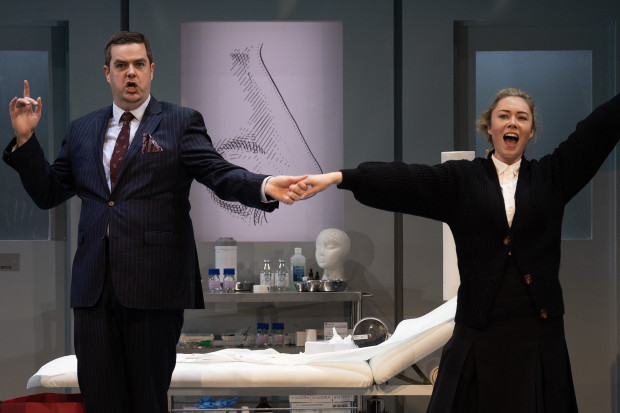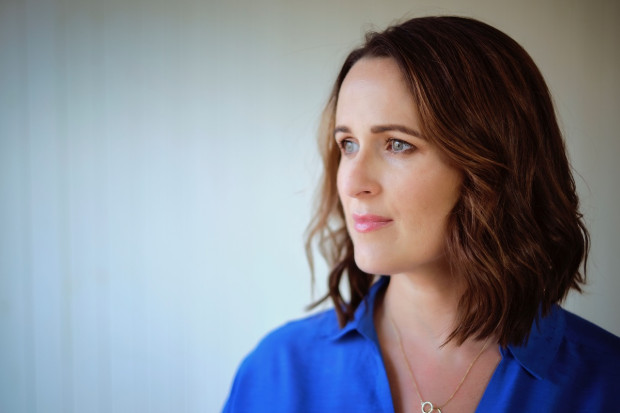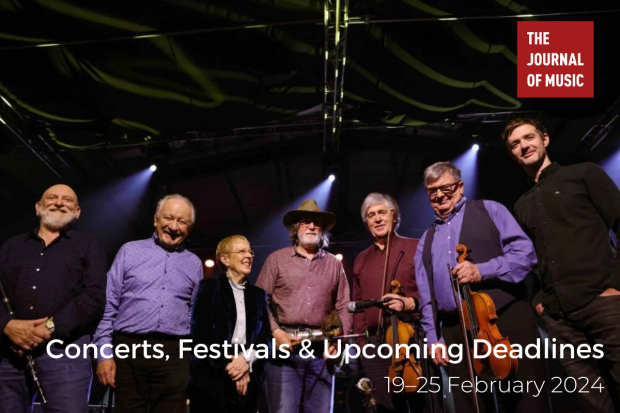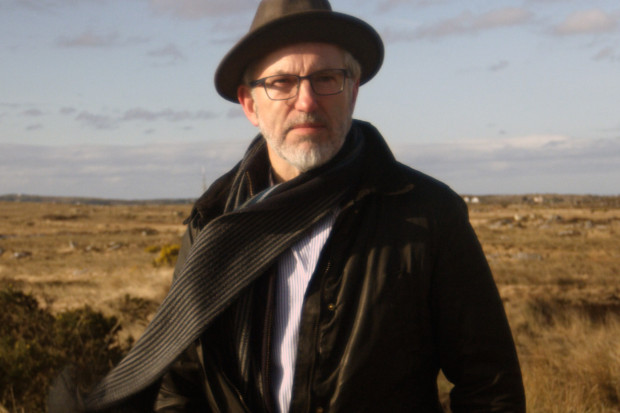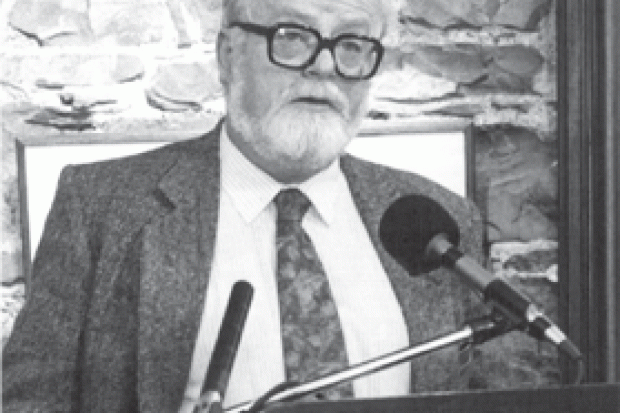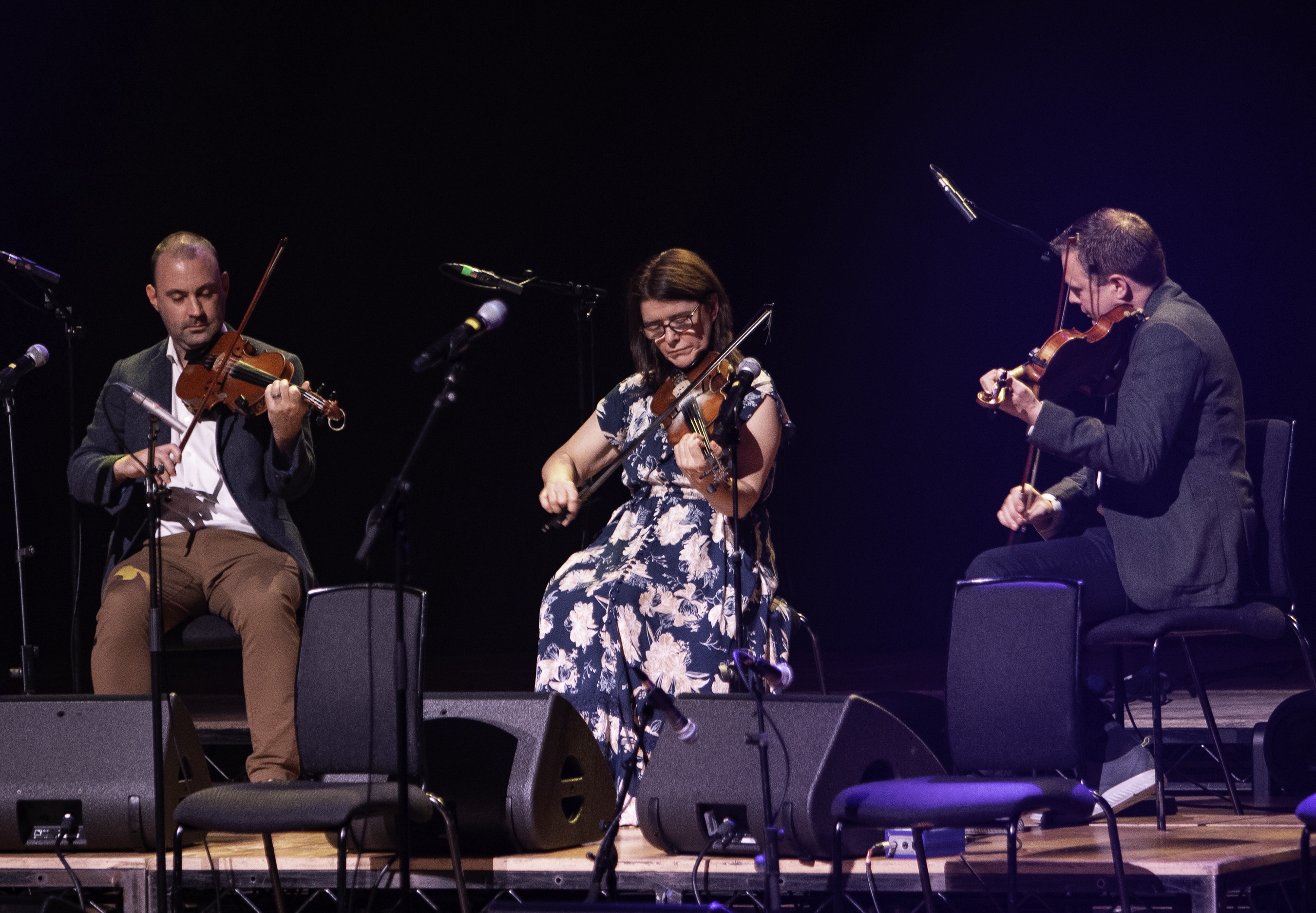
Conor Caldwell, Siobhán Peoples and Ciarán Ó Maonaigh (Photo: Des Gallagher)
A Tribute to a Transformative Artist
The Irish Traditional Music Archive’s Drawing from the Well series began during the pandemic as a series of online videos, interviews and short films. It included selected traditional musicians, singers and dancers engaging with the holdings of the archive as a way of reflecting on this valuable material, developing their artistic practice, and inspiring new performances. It also helped to bring the wealth of the archive’s holdings to a wider audience. The series remains online and can be accessed on the archive’s website, along with the follow-up Saoithe series, which is focused more on the creation of archival material through interviews and recordings with prominent musicians, rather than the (re)interpretation of it by traditional artists. An offshoot of the initial programme is a concert series, which initially gave a platform to the musicians featured on the website, but which later expanded to include a wider gamut of artists. The latest concert in this series, which was held on Saturday 28 October at the National Concert Hall, took a new approach, in that it was dedicated to the legacy of the great Donegal fiddle player Tommy Peoples, and marks the publication of the Tommy Peoples Collection on the archive’s website.
Like many of the performers on the night, Peoples might be said to need little introduction. A towering and transformative figure for traditional musicians, both as a solo performer and in ensemble (particularly with the Bothy Band), he could be dynamic and fiery in attack and rhythm, as well as delicate and sensitive in his touch, depending on the context. He was also a prolific composer of exquisitely crafted tunes, many of which are challenging in their novel interpretation of the traditional idiom. His artistry was recognised through his membership of Aosdána; during the concert, Dónal Lunny related how he marshalled support for this through highlighting the brilliance of one of his earlier tunes, ‘The Green Fields of Glentown’. (It was also a stark reminder that he was the last traditional musician elected to the academy, which remains something of a throwback to the rather blinkered high-culture focus of the earlier decades of the Arts Council.) His status was such that he was chosen as the inaugural TG4 Traditional Musician of the Year in 1998, and was awarded the Composer of the Year award in 2013.
The performances on Saturday night included many musicians who had played and created music with Peoples, as well as some younger performers who had been deeply influenced by his playing, or had been taught by him at workshops and summer schools. The concert opened with the three fiddlers Siobhán Peoples (daughter of Tommy), Conor Caldwell and Ciarán Ó Maonaigh, who are also the authors of the Tommy Peoples Collection. Given their deep involvement with the archive material, their two sets most clearly showed how an engagement with these sources can bring a new perspective to familiar tunes, musicians and collections. They began with the familiar set of Matt Peoples’ reels, which Tommy recorded with Matt Molloy and Paul Brady on their seminal 1978 album, and highlighted how these were tunes that he learnt from his uncle Mattha growing up in Donegal. They followed this with two of Peoples’ early compositions, ‘The Green Fields of Glentown’ and ‘La Cosa Mulligan’, often known as ‘Jackson’s’. These were among the music recorded by Breandán Breathnach in Dublin in 1968, and they noted how Peoples included the new tunes without telling Breathnach that he had composed them. The transcriptions of these were subsequently published in the second volume of Ceol Rince na hÉireann in 1976, and it wasn’t until later that they were confirmed to be his compositions.
Shaping the modern tradition
Other performances also drew attention to how Peoples helped shape the modern tradition through the settings he popularised. Paddy Glackin played ‘The King of the Pipers’, a three-part jig that he heard Tommy playing when he first moved to Dublin, as well as the reel ‘An Caher Rua’, his playing echoing the attack and bow work that Peoples brought to the tunes. For this he was joined by the piper Seán Potts, who movingly played ‘Hector the Hero’, a Scott Skinner air that was a key part of the fiddler’s repertoire. A late addition to the bill, Dermot Byrne was exceptional in a strathspey and reel set; ‘Little John’s Hame’ and ‘The Oak Tree’ were tunes he had played regularly in duet with him over the years.
The publication of Peoples’ book Ó Am go hAm (From Time to Time) in 2015 underlined the significant contribution he has made to Irish music as a composer. A highlight of the concert in this regard was Bríd Harper’s playing of a slip jig ‘Heels over Head’, the mazurka ‘The Walking Stick’, and the reel ‘Two for Joy’. Her approach reminded me of Peoples’ later style in its phrasing, subtle shifts in dynamic, and sweetness of tone. The trio of young Northern fiddlers (Sinéad McKenna, Megan Nic Fhionnghaile and Nia Ní Bheirn) was a perfect example of the exceptionally high standards of the younger generation of musicians – they brought bite, vigour and an infectious energy to two of his jigs (‘The Wishing Well’ and ‘Jocelyn’s Tree’). The musicians being unaccompanied also allowed the natural chording and double-stops to resonate to their best effect.
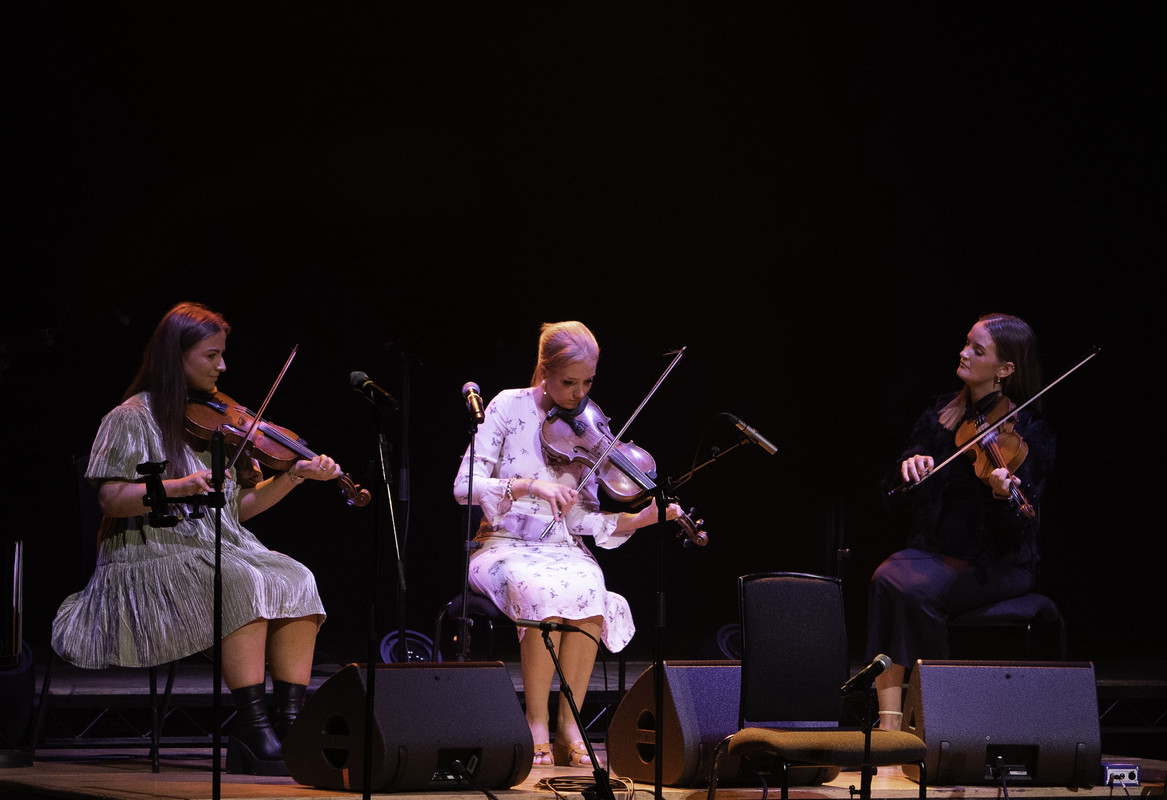
Nia Ní Bheirn, Megan Nic Fhionnghaile and Sinéad McKenna (Photo: Des Gallagher)
 Although the focus was naturally on instrumental music, there were also contributions from singers who had close associations with Peoples, particularly during the early part of his career. Tríona and Maighréad Ní Dhomhnaill included the plaintive ‘The Maid of Coolmore’, which had been recorded by Tríona on the Bothy Band’s second album, and they contrasted this with the more lively ‘Ar a Ghabhail Chun an Chuain Dom’. Paul Brady’s first song seemed harder to square with the event, as ‘Nothing but the Same old Story’ seemed a little out of place. This was, however, compensated for by the strong Donegal connections of ‘Paddy’s Green Shamrock Shore’.
Although the focus was naturally on instrumental music, there were also contributions from singers who had close associations with Peoples, particularly during the early part of his career. Tríona and Maighréad Ní Dhomhnaill included the plaintive ‘The Maid of Coolmore’, which had been recorded by Tríona on the Bothy Band’s second album, and they contrasted this with the more lively ‘Ar a Ghabhail Chun an Chuain Dom’. Paul Brady’s first song seemed harder to square with the event, as ‘Nothing but the Same old Story’ seemed a little out of place. This was, however, compensated for by the strong Donegal connections of ‘Paddy’s Green Shamrock Shore’.
While the standard of performances never dipped across the evening, my impression was that the music became somewhat more detached from Peoples as the concert progressed, particularly when the more headline performers came on stage, although all of them spoke warmly and often poignantly about Peoples’ music and friendship. As is unfortunately unavoidable with concerts of this form, many of the contributions seemed too short, and more solo sets would have been preferable to the rather clichéd finale, where all the musicians came back on stage for some workaday jigs and reels. This might also have been reconfigured to make space for some more of his compositions. However, this is not to take away from what was on the whole a very enjoyable concert, and a fine tribute to a great musician.
To view the new Tommy Peoples Collection, visit www.itma.ie/collections/tommy-peoples.
Subscribe to our newsletter.
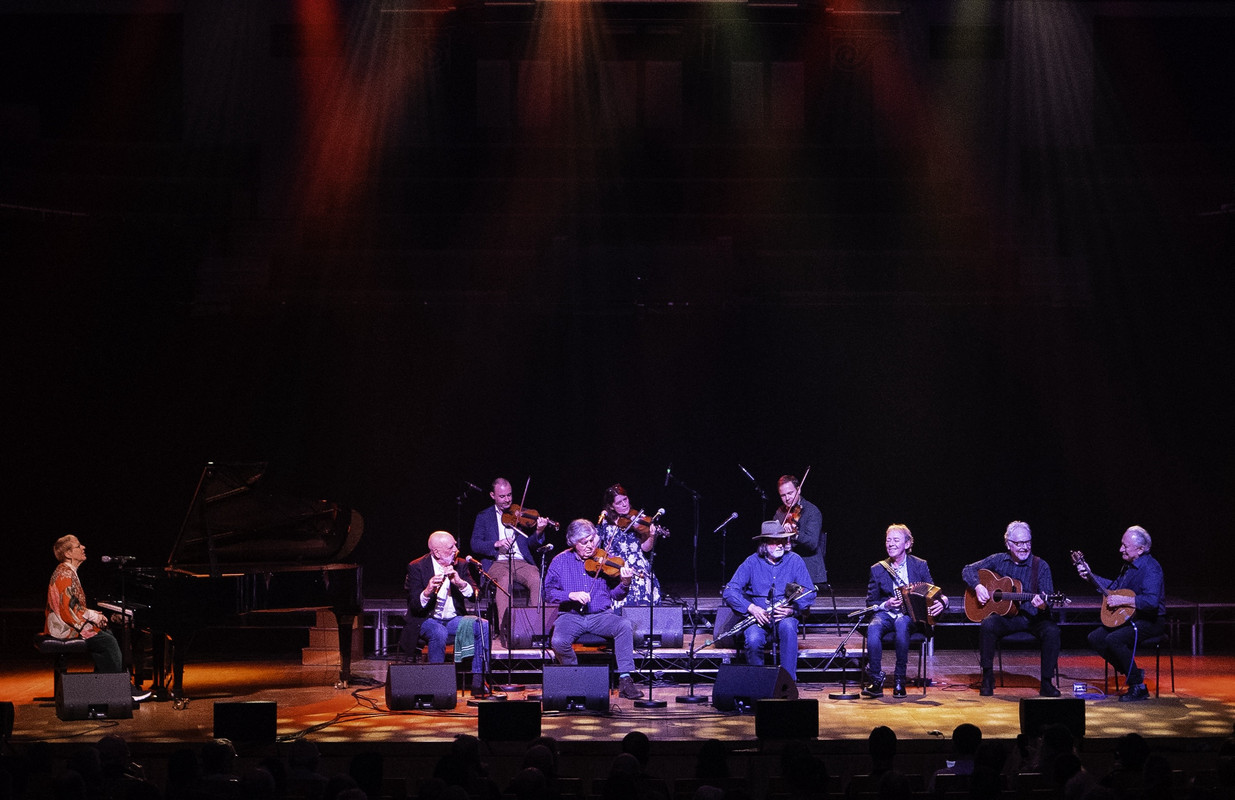
From left to right: Tríona Ní Dhomhnaill, Matt Molloy, Conor Caldwell, Paddy Glackin, Siobhán Peoples, Paddy Keenan, Ciarán Ó Maonaigh, Dermot Byrne, Paul Brady and Dónal Lunny. (Photo: Des Gallagher)
Published on 2 November 2023
Adrian Scahill is a lecturer in traditional music at Maynooth University.










